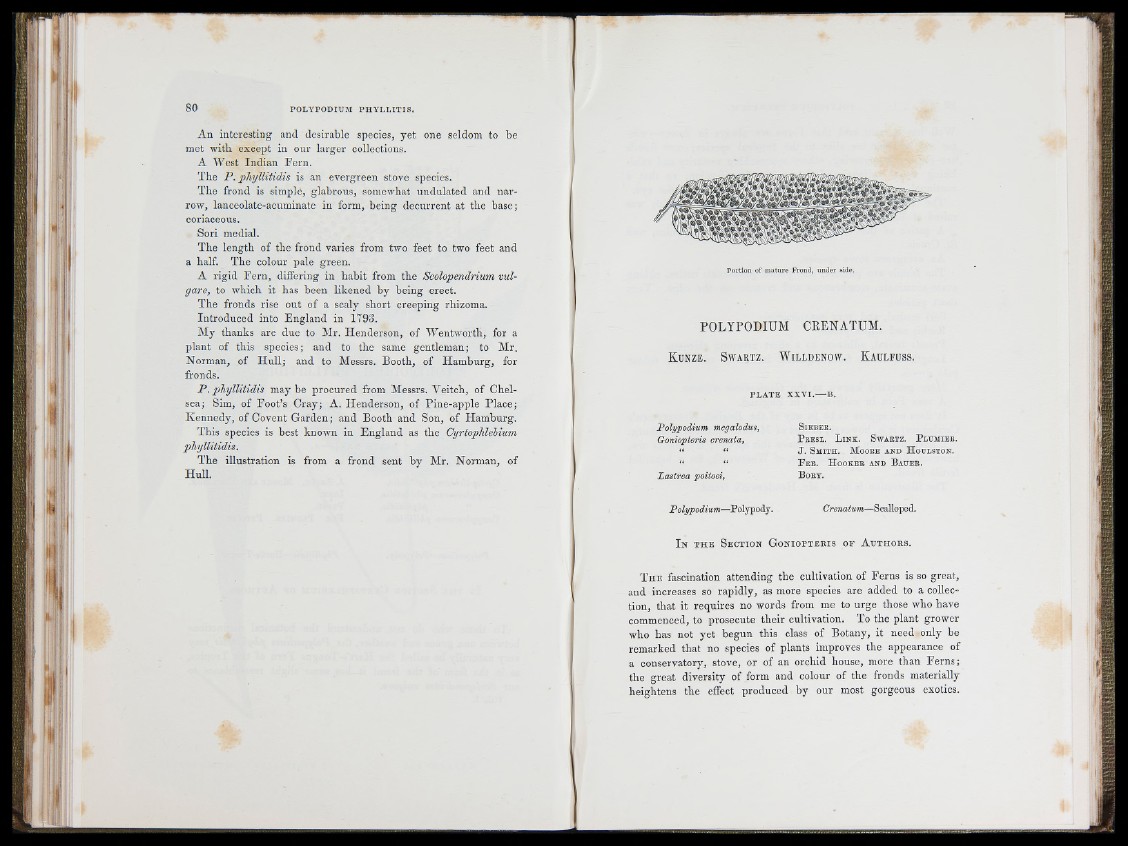
I ' IN
ii
A n in teresting and desirable species, yet one seldom to be
met with except in our larg e r collections.
A We st In d ian F e rn .
T h e P . p h y llitid is is an evergreen stove species.
The frond is simple, glabrous, somewhat u n d u la ted and n a rrow,
lanceolate-acuminate in form, being d e cu rren t at th e base;
coriaceous.
Sori medial.
T h e len g th of the frond varies from two feet to two feet and
a half. T h e colour pale green.
A rig id F e rn , differing in h ab it from the Scolopendrium vul-
gare, to which it has been likened b y being erect.
T h e fronds rise out of a scaly short creeping rhizoma.
In tro d u c ed into E n g la n d in 1798.
My thanks are due to Mr. H en derson, of W en tw o rth , for a
p lan t of this species; and to the same gentleman; to M r.
Norman, of H u ll; and to Messrs. Booth, of H am b u rg , for
fronds.
P . p h y llitid is m a y b e p rocured from Messrs. Veitch, of Chelsea;
Sim, of F o o t’s C ray ; A. H en derson, of Pin e -ap p le P la c e ;
K en n ed y , of Covent G a rd e n ; and Booth and Son, of Hamb u rg .
This species is best known in E n g la n d as the Cyrtophlehium
T h e illustration is from a frond sent b y Mr. Norman, of
H u ll.
P o r t i o n o f m a t u r e F r o n d , u n d e r s id e .
POLYPODIUM CEENATUM.
K d n z e . S w a r t z . W il l d e n o w . K a ü l f ü s s .
P L A T E X X V I . B.
P olypodium megalodus,
Goniopteris crenata,
Lastrea
S lEB E E .
P b e s e . L i n k . S w a e t z . P l u m i e b .
J . S m i t h . M o o e e a n d H o u l s t o n .
P e e . H o o k e e a n d B a u e e .
B o e y .
P o lypodium—Polypody. Crenatum—Scalloped.
I n t h e S e c t i o n G o n i o p t e r i s o f A u t h o r s .
T h e fascination a ttending the cultivation of F e rn s is so great,
and increases so rap id ly , as more species are added to a collection,
that it requ ire s no words from me to u rge those who have
commenced, to prosecute th e ir cultivation. To the plan t grower
who has not y e t beg u n this class of Botany, it need only be
remarked th a t no species of plants improves the appearance of
a conservatory, stove, or of an orchid house, more th an F e rn s;
th e gre a t diversity of form and colour of the fronds materially
heightens the effect produced b y our most gorgeous exotics.